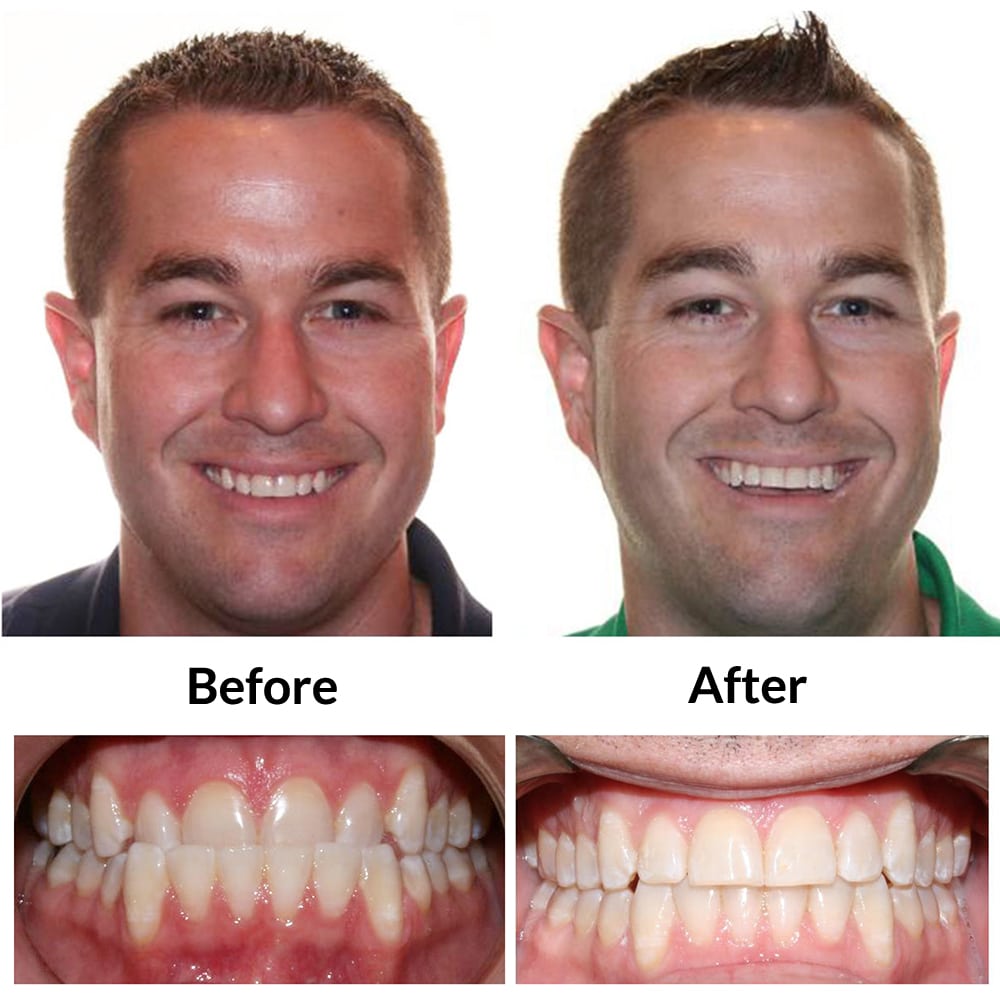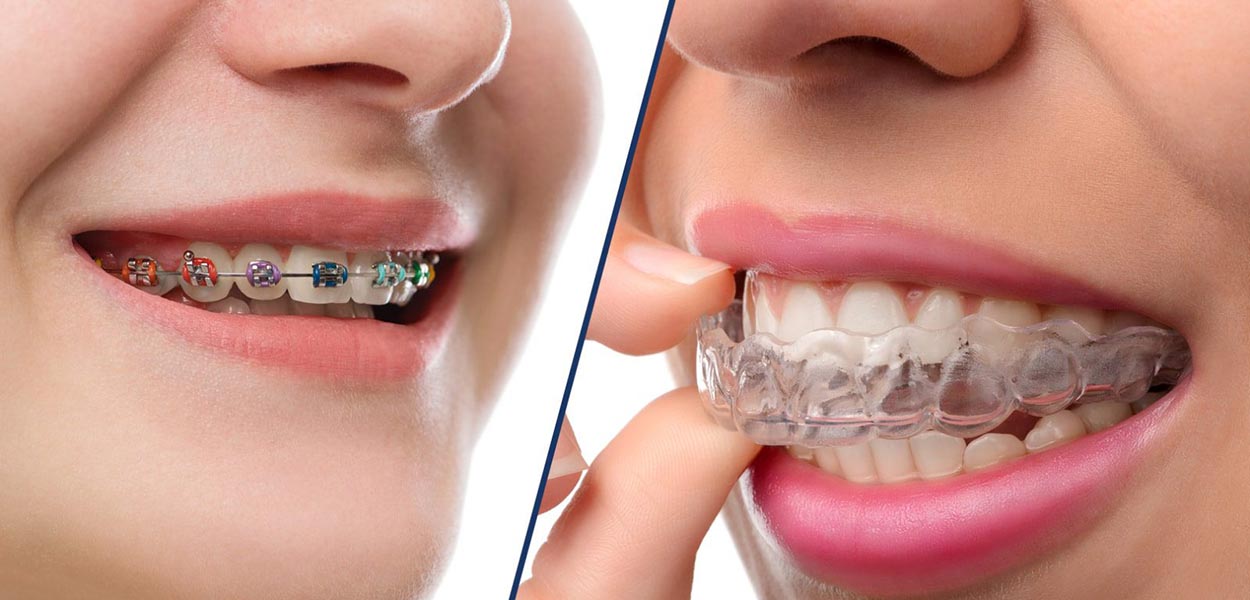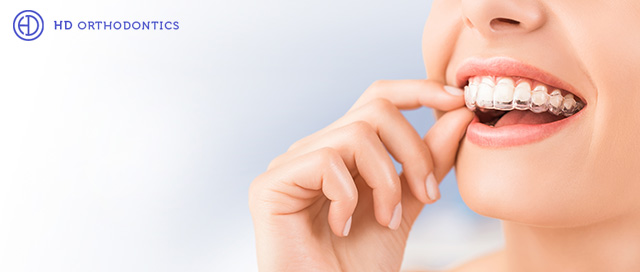How Invisalign Functions: Your Overview to Clear Aligners and Their Effectiveness
Invisalign vs. Typical Braces: Which Choice Is Right for You?
When taking into consideration orthodontic therapy, the choice between Invisalign and traditional braces presents a number of crucial variables that merit cautious examination. Invisalign offers a very discreet choice with detachable aligners, while typical dental braces offer a more noticeable yet efficient option for severe imbalance.
Introduction of Treatment Options

On the other hand, conventional braces contain metal braces and wires that are bound to the teeth. This method uses continual stress gradually to achieve alignment. While efficient for complicated orthodontic problems, traditional braces call for normal brows through for adjustments and can present difficulties in keeping oral health because of the trouble of cleansing around cables and braces.
Both choices have their merits, and the choice typically hinges on particular oral problems, way of living choices, and person conformity. Ultimately, consulting an orthodontic expert is vital for determining the most suitable treatment plan customized to specific demands. Recognizing the subtleties of each alternative can significantly influence the total success of orthodontic treatment.
Aesthetic Considerations
A significant variable affecting the selection in between Invisalign and conventional braces is the aesthetic allure each treatment provides. Invisalign aligners are crafted from clear plastic, making them practically invisible when put on.
In comparison, standard braces include metal braces and cables, which can be much more noticeable. While innovations in orthodontic innovation have actually resulted in the growth of smaller braces and colored elastics, traditional dental braces still maintain a more obvious profile. For some people, the visibility of dental braces may prevent them from seeking needed treatment.
Eventually, the option in between Invisalign and conventional braces may rest on personal choices concerning appearances. Individuals that prioritize discretion often favor Invisalign, while those who are much less worried regarding presence may decide for typical braces. Recognizing the aesthetic effects of each alternative is critical for making an informed decision that lines up with one's way of living and choices.
Comfort and Convenience

In regards to ease, Invisalign aligners are detachable, allowing clients to enjoy their favorite foods without click for source limitation and preserve optimum dental hygiene. Brushing and flossing are streamlined, as the aligners can be obtained throughout these routines, whereas conventional dental braces need careful steering around cords and brackets.
In comparison, standard dental braces necessitate normal adjustments, making them much less hassle-free for those with busy timetables. Overall, the convenience and convenience of Invisalign make it an attractive selection for numerous people seeking orthodontic treatment.
Treatment Period and Effectiveness
While both Invisalign and traditional dental braces work in remedying dental imbalances, the period of therapy can vary dramatically in between both choices. Usually, Invisalign therapy can take anywhere from 12 to 18 months, depending on the complexity of the situation. The clear aligners function by progressively changing teeth into their desired settings, and routine follow-ups with an orthodontist aid ensure progress remains on the right track.
On the other hand, standard dental braces typically require a longer dedication, typically varying from 18 months to three years. This results from their set nature and making use of cords and braces, which can be a lot more reliable for intricate instances and extreme imbalances (Invisalign). The therapy efficiency of typical dental braces is well-documented, as they enable precise adjustments and better control over tooth activity
Inevitably, the selection in between Invisalign and standard braces may depend upon both the anticipated treatment period and the certain oral problems available. Consulting with an orthodontist is vital, as they can provide customized referrals based upon private demands, ensuring the chosen method aligns with desired results and timeframes.
Price Contrast and Insurance Coverage Alternatives
Price plays a significant function in the decision-making procedure for people taking into consideration orthodontic therapy, whether choosing Invisalign or traditional dental braces. Typically, the expense of Invisalign arrays from $3,000 to $8,000, while conventional dental braces generally set you back between $2,000 and $6,000. Factors affecting these prices include the intricacy of the situation, the period of treatment, and geographical location.
Several dental insurance coverage plans supply partial coverage for orthodontic therapies, but the this contact form specifics can vary commonly. Typically, traditional dental braces might be a lot more often covered by insurance strategies compared to Invisalign, which some insurance providers categorize as a cosmetic treatment.
Additionally, a number of orthodontic techniques provide flexible payment strategies, making both treatment options a lot more accessible. Individuals should ask about prospective funding choices and discounts for in advance settlements. Assessing the total expense, consisting of insurance policy benefits and layaway plan, is important for making an educated choice that lines up with both aesthetic choices and budget plan factors to consider.

Final Thought
In recap, the choice in between Invisalign and standard braces depends upon several aspects, including aesthetic preferences, convenience, treatment duration, and price. Invisalign provides a very discreet, removable alternative that assists in dental hygiene and nutritional flexibility, while traditional braces might be more appropriate for complicated dental issues and typically come at a reduced rate point. Eventually, consultation with an orthodontist is crucial to analyze individual conditions and establish the most suitable treatment option for accomplishing ideal oral alignment.
When considering orthodontic therapy, the selection in between Invisalign and conventional braces presents numerous crucial variables that merit cautious examination.Contrasting Invisalign and standard dental braces exposes distinctive treatment here are the findings options for orthodontic modification.While both Invisalign and traditional braces are efficient in remedying oral imbalances, the period of treatment can vary substantially between the 2 alternatives.Cost plays a significant duty in the decision-making process for people taking into consideration orthodontic therapy, whether choosing for Invisalign or standard dental braces.In summary, the choice in between Invisalign and traditional dental braces hinges on multiple aspects, consisting of aesthetic choices, comfort, therapy period, and price.